25 Common Types of Trees in Minnesota (with Pictures)
-
Chris Dinesen Rogers
- Last updated:

The land of the 10,000 lakes boasts a wide variety of trees, all able to handle the frigid winter temperatures. The state includes five USDA Plant Hardiness Zones from 3a–5a, with the coldest temps at -40℉. It has a frost line penetration of 70–100 inches that can directly affect what plants can survive in Minnesota. This limits it to 53 native tree species.
Our guide covers the trees you’re more likely to encounter. We’ve grouped them into coniferous and deciduous trees. They fall in line with Minnesota’s four ecological provinces.
The 25 Common Types of Trees in Minnesota
1. Red Cedar (Juniperus virginiana)

| Group: | Coniferous |
| Family: | Cypress Family |
| Growth: | Up to 50 feet |
| Habitat: | Dry woods, cliffs, river bluffs |
The Red Cedar is more correctly called a juniper instead of a cedar. Its wood is lightweight yet durable, making it an excellent choice for fence posts. The foliage has needles in juvenile specimens and will eventually become scales as it grows. It’s a fragrant, soft wood that enjoys its place in the sunshine, mainly in the southern part of the state.
2. White Cedar (Thuja occidentalis)

| Group: | Coniferous |
| Family: | Cypress Family |
| Growth: | Up to 60 feet |
| Habitat: | Moist woods |
The White Cedar looks like the previous example, only it prefers the moist soils of the northern part of Minnesota. It has the same characteristic form and pleasant-scented foliage. Whereas Red Cedar is fine-grained, this tree’s wood is coarse. While the former is shade intolerant, the White Cedar doesn’t mind it. The species shares the same durability and has similar uses.
3. Balsam Fir (Abies balsamea)
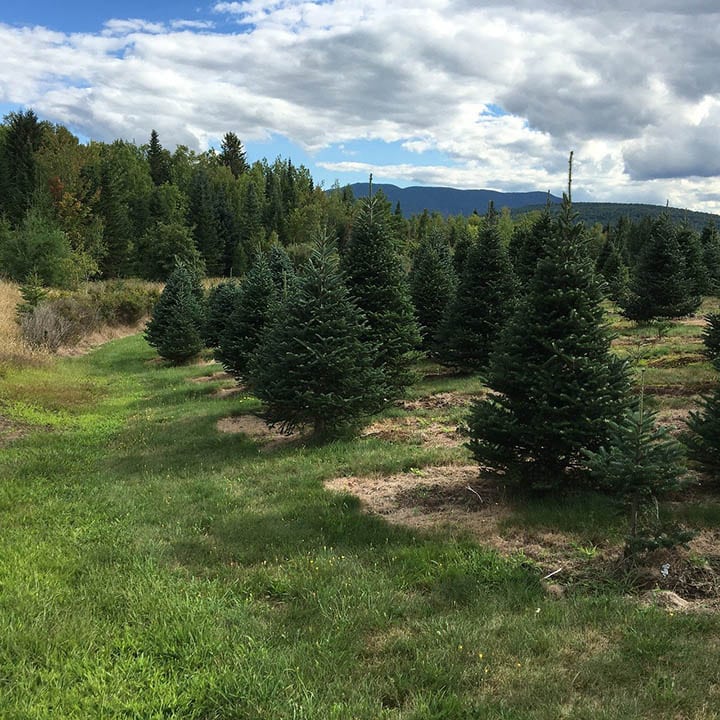
| Group: | Coniferous |
| Family: | Pine Family |
| Growth: | Up to 60 feet |
| Habitat: | Moist woods |
The Balsam Fir is another species of the north woods where it can tolerate challenging conditions. It’s a vital food source for many wildlife species from moose to squirrels. You often find farmed trees used for Christmas trees because of their attractive shape and pleasing scent. It’s also a popular ornamental variety with several cultivars available.
4. Tamarack (Larix laricina)

| Group: | Coniferous |
| Family: | Pine Family |
| Growth: | Up to 70 feet |
| Habitat: | Cool wetlands |
The Tamarack is one of the few deciduous trees of its type. Its range extends from the northern half of the state into Canada. Its wood is durable and rot resistant, even at a smaller thickness, making it versatile. Nevertheless, it is shade intolerant and sensitive to its environmental conditions.
5. White Spruce (Picea glauca)
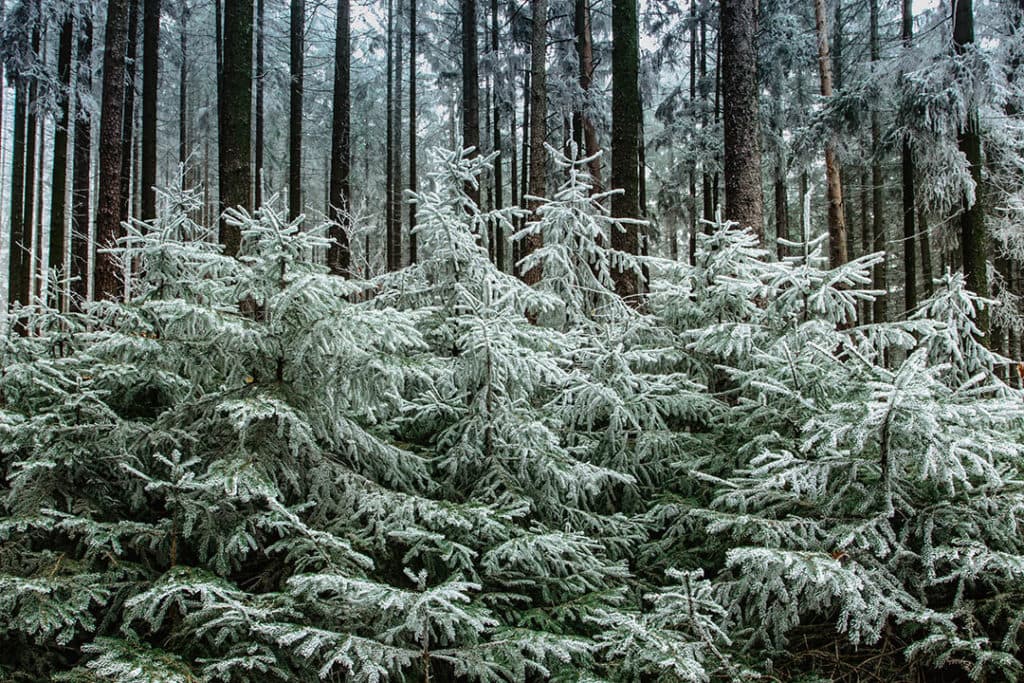
| Group: | Coniferous |
| Family: | Pine Family |
| Growth: | Up to 60 feet |
| Habitat: | Dry or moist soils |
The White Spruce is another true Minnesota species. It’s widespread in the state because of its tolerance for various soil conditions. It can handle the cold well, making it one of the northernmost species of its kind. Its wood is attractive and has multiple uses from paper to gin production. The tops of the trees are popular holiday decorations during the winter.
6. Black Spruce (Picea mariana)

| Group: | Coniferous |
| Family: | Pine Family |
| Growth: | Up to 30 feet or more, depending on the conditions |
| Habitat: | Moist soils |
The Black Spruce is found throughout the northern part of the country into Canada and Newfoundland. It’s tolerant of various conditions, although it won’t reach its full potential in cold wetlands. It’s not an important lumber species. Although sometimes planted as a cultivar, its best use is as a paper pulp source because of its softness and light color.
7. Jack Pine (Pinus banksiana)

| Group: | Coniferous |
| Family: | Pine Family |
| Growth: | Up to 60 feet |
| Habitat: | Well-draining, sandy soils |
Jack Pine thrives in central Minnesota, particularly in poor soils that other species may not tolerate. It has coarsely grained wood that is often knotty. While not the best choice for lumber, it makes an excellent windbreak. The tree has tight cones that only open after a fire.
8. Eastern White Pine (Pinus strobus)

| Group: | Coniferous |
| Family: | Pine Family |
| Growth: | Up to 100 feet |
| Habitat: | Dry rocky ridges and sphagnum bogs |
The Eastern White Pine was an important species for the United States. It continues to provide excellent lumber, fulfilling various general construction needs. It’s a soft, lightweight wood. You can easily identify this species by its soft needles bundled in groups of five. It gives the tree a feather-like appearance that makes it an attractive landscaping addition if you have the space.
9. Red or Norway Pine (Pinus resinosa)
| Group: | Coniferous |
| Family: | Pine Family |
| Growth: | Up to 80 feet or more |
| Habitat: | Sandy, loam soil |
The Red or Norway Pine stands out on our list as Minnesota’s state tree, declared by official proclamation in 1953. The legislation particularly noted its sturdiness and economic contribution to the state. It’s a large tree with durable wood. It is hardy and disease resistant as well. It’s long-lived, with one specimen from Ontario reaching 500 years. This is an attractive tree that will make an excellent windbreak.
10. Eastern Hemlock (Tsuga canadensis)
| Group: | Coniferous |
| Family: | Pine Family |
| Growth: | Up to 75 feet |
| Habitat: | Moist, cool valleys and flats |
The Eastern Hemlock doesn’t have a large stronghold in Minnesota. That’s surprising, given its tolerance for less-than-ideal conditions. It’s a good-looking tree, too. That makes its decline disturbing, prompting the International Union for Conservation of Nature and Natural Resources (IUCN) to list it as near threatened. The Hemlock Wooly Adelgid (Adelges tsugae) has decimated the species.
11. River Birch (Betula nigra)
| Group: | Deciduous |
| Family: | Birch Family |
| Growth: | Up to 60 feet |
| Habitat: | Riparian habitats |
The name of the River Birch tells you a lot about this wetland-loving species. It’s not a significant lumber tree. Its value is in its beauty. The bark of this species is gorgeous. Its preference for riparian habitats makes it an excellent choice for erosion control because it will anchor the soils and reduce these detrimental environmental impacts. It’s also a popular ornamental tree.
12. Paper Birch (Betula papyrifera)
| Group: | Deciduous |
| Family: | Birch Family |
| Growth: | Up to 70 feet |
| Habitat: | Wide range of habitats |
The Paper Birch provides a lot of value to both people and wildlife, including wild bird species like the Yellow-Bellied Sapsuckers and chickadees. It makes excellent firewood and has many other uses for flooring and toys. American Indians also found value in this species, particularly with canoes. The wood is both lightweight and strong, making it a natural choice for this purpose.
13. White Oak (Quercus alba)
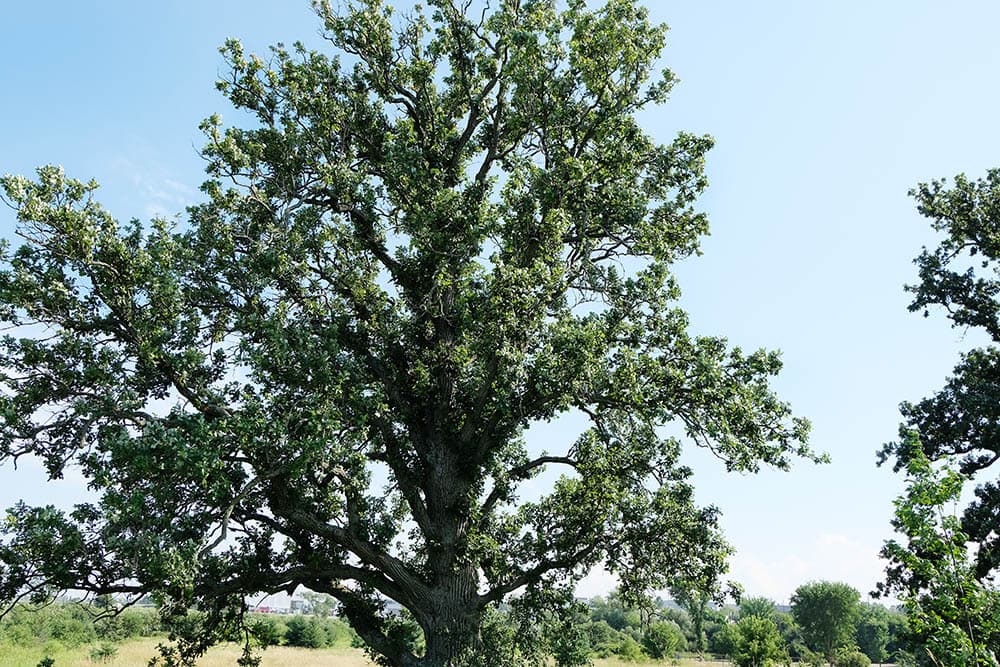
| Group: | Deciduous |
| Family: | Beech Family |
| Growth: | Up to 80 feet |
| Habitat: | Well-draining, acidic soils |
The White Oak is a stately tree that grabs your attention with its size and form. It is widespread throughout the state. That’s a good thing because of the many uses of this species. Its durable wood makes it an excellent choice wherever sturdiness is desired. The international wine industry makes extensive use of it for the toasty notes it adds to these beverages, with Minnesota as a primary source.
14. Bur Oak (Quercus macrocarpa)
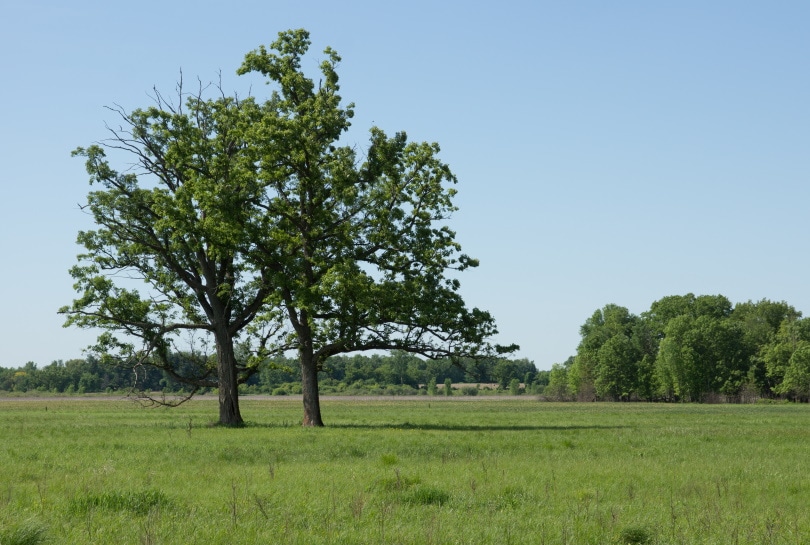
| Group: | Deciduous |
| Family: | Beech Family |
| Growth: | Up to 80 feet |
| Habitat: | Moist, well-draining soils |
The Bur Oak lives up to its name with a tree with a commanding presence. Although it is a forest species, you’ll also see it in parks and open fields. It gets its name from the bristled edges of its acorns that make it easy to identify. Its wood is strong, making it appropriate for various purposes from furniture to fencing to railroad ties.
15. Northern Red Oak (Quercus rubra)
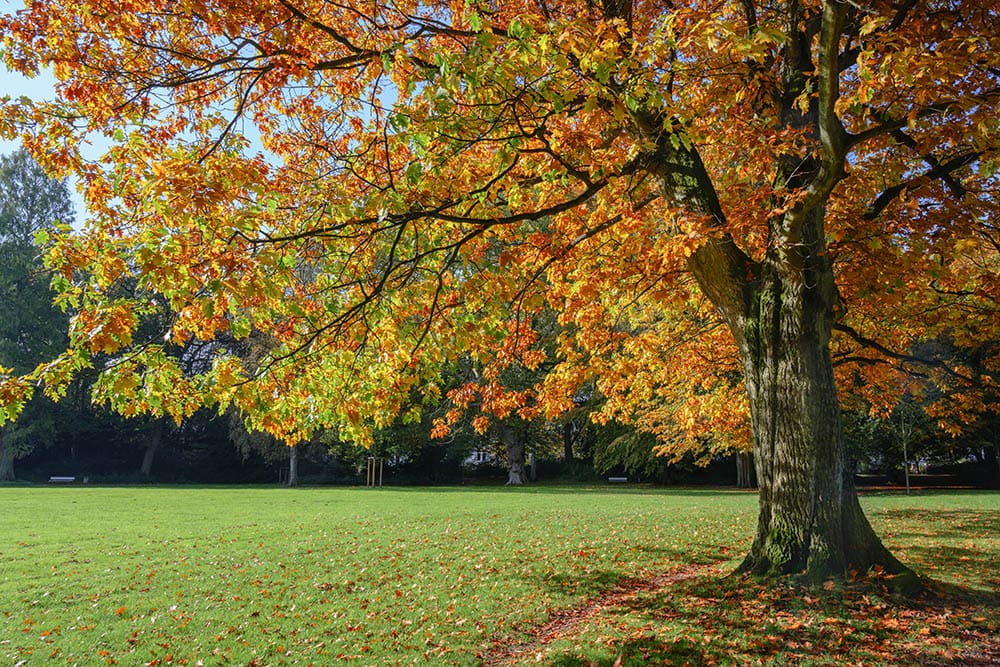
| Group: | Deciduous |
| Family: | Beech Family |
| Growth: | Up to 80 feet |
| Habitat: | Rich soils |
The Northern Red Oak is another tree with an undeniable presence. It’s also widespread throughout the state, particularly in the richer soils of the southern part of Minnesota. It’s faster growing than White Oak, making it desirable for lumber. It’s a valuable species throughout the country. Even though its acorns taste bitter, it still provides a vital food source for songbirds, wild turkeys, and deer.
16. Bitternut Hickory (Carya cordiformis)
| Group: | Deciduous |
| Family: | Walnut Family |
| Growth: | Up to 75 feet |
| Habitat: | Rich, moist woods |
The Bitternut Hickory stands out with its strong, durable wood, even if it’s appropriately named as a food source for humans. It is an excellent choice for tools and farm implements where you need materials that won’t fail. We’d be remiss if we didn’t mention the smell of the wood. It’s hard to beat a grill or smoker with hickory chips smoldering away, flavoring your ribs.
17. Shagbark Hickory (Carya ovata)
| Group: | Deciduous |
| Family: | Walnut Family |
| Growth: | Up to 100 feet or more |
| Habitat: | Rich, moist soils often near streams |
You can easily identify the Shagbark Hickory by its distinctive bark that inspired its name. It adds interest to an already eye-catching tree because of its height. Like the previous species, it finds its way to the grill. It is also durable for tools and other uses where you need sturdy materials. Its nuts are edible and quite tasty.
18. Black Walnut (Juglans nigra)
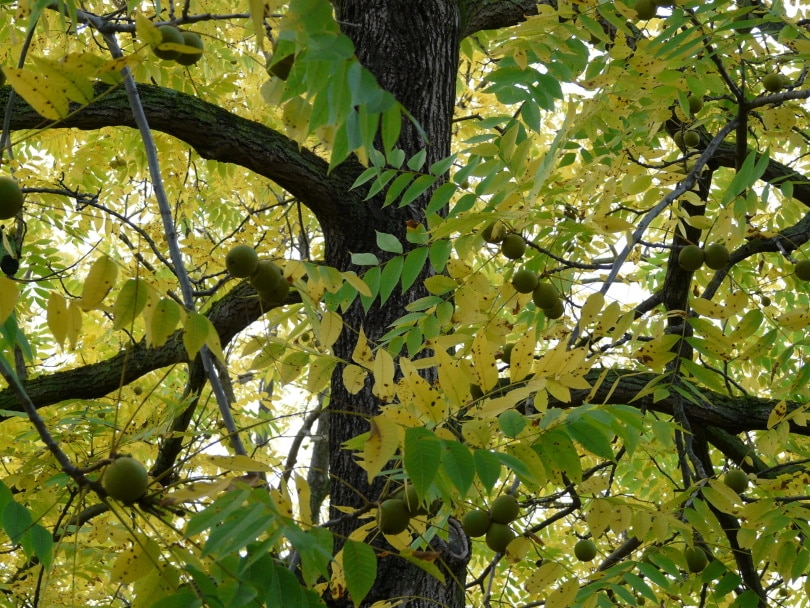
| Group: | Deciduous |
| Family: | Walnut Family |
| Growth: | Deciduous |
| Habitat: | Rich bottomland soils |
The Black Walnut is valuable on several scores, from its tasty nuts to beautiful timber. You can also make an attractive stain from its shells. Many people use it for items such as gunstocks because of its gorgeous color and grain. On the downside, it’s an allelopathic species that can keep other plants at bay. It’s also a messy tree. You might as well put on the welcome mat for the squirrels if you plant one in your yard.
19. Basswood (Tilia americana)
| Group: | Deciduous |
| Family: | Mallow Family |
| Growth: | Up to 80 feet |
| Habitat: | Rich, moist woods |
The Basswood is an attractive tree on so many fronts. Its form is gorgeous, making it an excellent shade tree. Its heart-shaped leaves are pretty. It also produces sweet flowers that bees pollinate to make tasty honey. Its value isn’t in its timber as it is as a landscape feature. This tree will make a beautiful focal point. Commercial uses include paper and ornamental projects.
21. White Ash (Fraxinus americana)
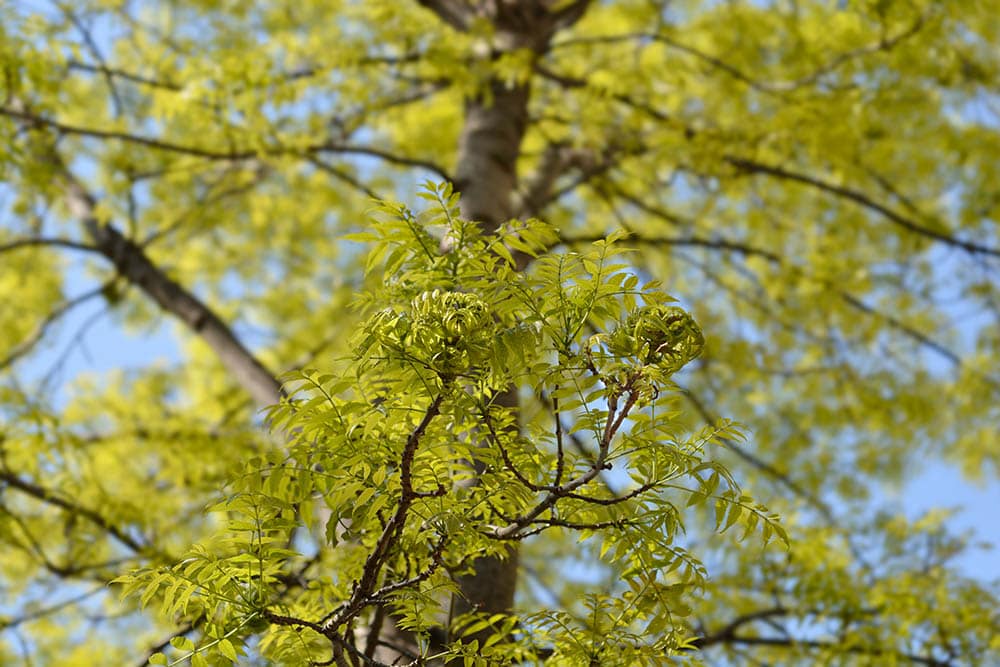
| Group: | Deciduous |
| Family: | Olive Family |
| Growth: | Up to 80 feet |
| Habitat: | Rich soils in southeastern Minnesota |
The White Ash scores high marks for its beauty, durability, and all-around usefulness. You could call it an all-American tree because of its use for baseball bats. It also works well as an ornamental addition to your landscaping. The color and markings on its bark make it an interesting species. That makes it a popular painting subject for many artists.
21. Quaking Aspen (Populus tremuloides)
| Group: | Deciduous |
| Family: | Willow Family |
| Growth: | Up to 65 feet |
| Habitat: | Pioneer species |
The Quaking Aspen demands your attention with its attractive bark and trembling leaves. A stand of these trees is an impressive sight. It’s a fast-growing species that is often the first one to repopulate the land after a fire. It takes advantage of the added nutrients in the soil that a fire has released. Its best use is with paper products of all sorts.
22. Eastern Cottonwood (Populus deltoides)
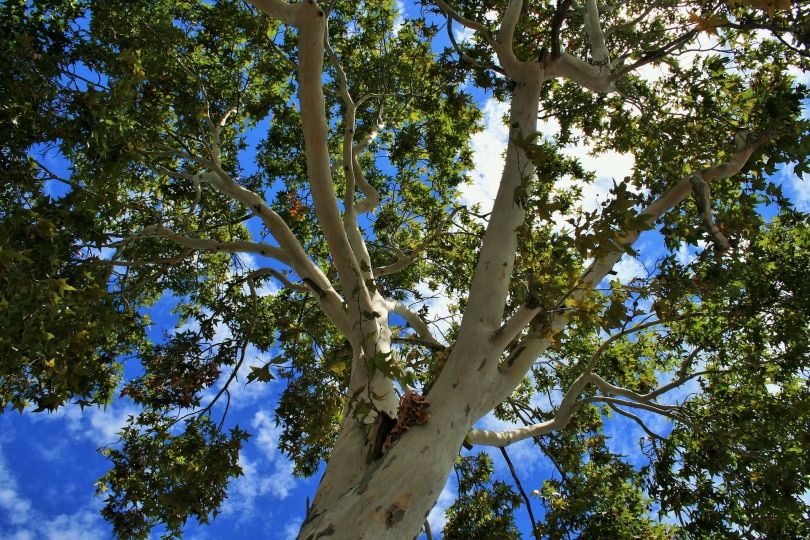
| Group: | Deciduous |
| Family: | Willow Family |
| Growth: | Up to 100 feet |
| Habitat: | Moist and dry soils |
Few sights are more eye catching than a stand of Eastern Cottonwoods along a riverbank. However, it will also find a low area in a prairie or grasslands to take advantage of the moisture. Unfortunately, the wood isn’t rot resistant. Nevertheless, it makes an excellent windbreak since it is fast-growing. While its wood is attractive, it warps. Its best use is for paper products.
23. Silver Maple (Acer saccharinum)
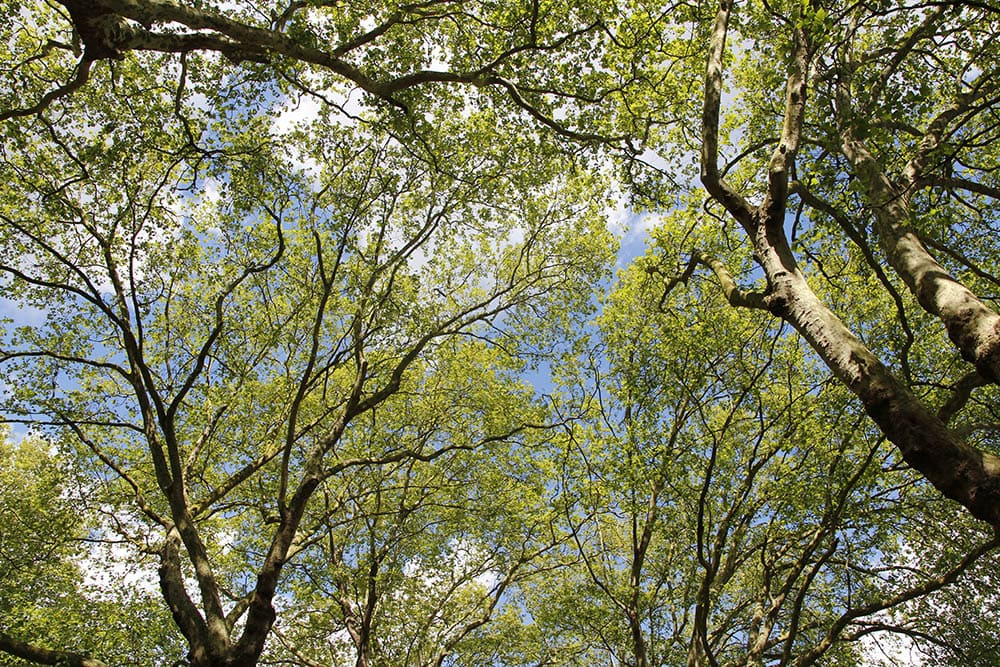
| Group: | Deciduous |
| Family: | Soapberry Family |
| Growth: | Up to 100 feet or more |
| Habitat: | Variety of soil types |
The Silver Maple shines as a shade tree. It gets the job done quickly since it is fast growing. Its impressive heights mean that it will cover a lot of area with its foliage. It gets its name from the silvery color of the underside of its leaves. Like all maples, it is a messy tree because of the samaras or helicopters its sheds. The chances are good you’ll find plenty of maple saplings in your yard the following year.
24. Sugar Maple (Acer saccharum)
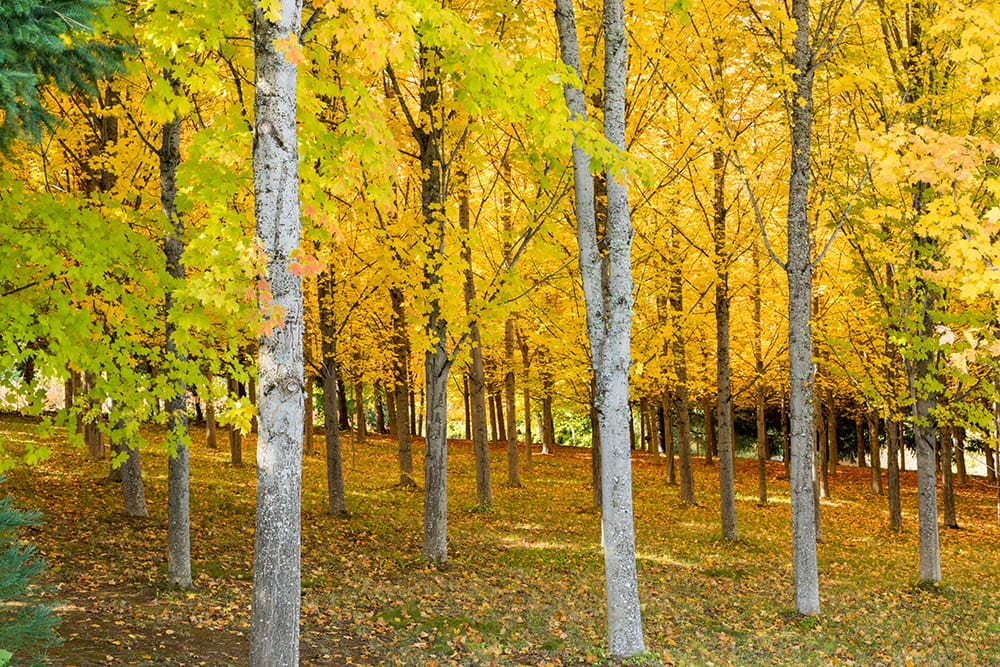
| Group: | Deciduous |
| Family: | Soapberry Family |
| Growth: | Up to 80 feet |
| Habitat: | Cool, rich soils |
The Sugar Maple has the same advantages and disadvantages as the previous species. The negative factors are a boon to squirrels that rely on these trees for an alternative food source. Its wood is gorgeous and quite durable, making it suitable for various ornamental uses. We’d be remiss if we didn’t mention the syrup, which is probably one of the most delicious foods you’ve ever tasted.
25. American Elm (Ulmus americana)

| Group: | Deciduous |
| Family: | Elm Family |
| Growth: | Up to 70 feet |
| Habitat: | Rich bottomland soils |
The American Elm has durable wood, making it suitable for various uses. It is useful in thin strips or furniture. It’s a hardy tree that doesn’t mind the harsh Minnesota winters. Sadly, we almost lost this tree to the ravages of Dutch elm disease (DED). It had been a ubiquitous tree in city settings because of its shade and attractive form. Hopefully, new cultivars will erase this fungal threat.
Invasive and Non-Native Trees
Minnesota fights a battle with invasive and non-native trees like most areas. The problem with these species is that they can crowd out native ones. That can have cascading effects on wildlife that may depend on them for food and shelter. Aggressive trees can create monocultures consisting of only a few plants, leading to negative environmental impacts.
- Amur Honeysuckle (Lonicera maackii)
- Black Locust (Robinia pseudoacacia)
- Common Buckthorn (Rhamnus cathartica)
- Japanese Barberry (Berberis thunbergii)
- European Alder (Alnus glutinosa)
Conclusion
Minnesota has a rich diversity of flora and fauna, despite its northern location. Many trees fulfill vital needs for fuel, timber, and other uses. Many are also important to wildlife, including birds. They provide a reliable winter food source when other things are scarce. Both coniferous and deciduous species fill these roles while providing shade and beauty to our parks, gardens, and backyards.
Featured Image Credit: Shirley810, Pixabay
Contents
